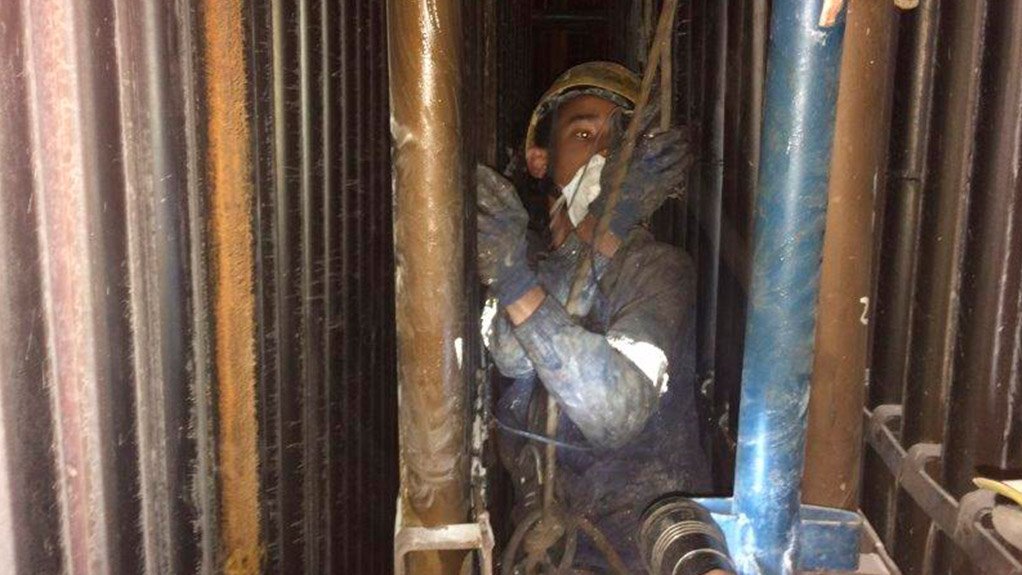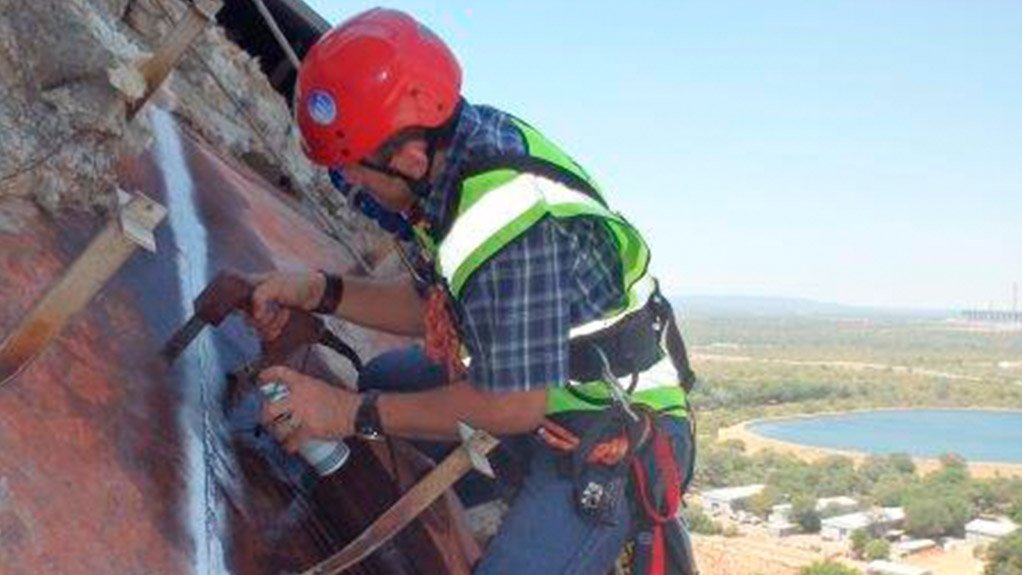- Non-Destructive Testing (0.03 MB)
/ MEDIA STATEMENT / This content is not written by Creamer Media, but is a supplied media statement.
Non-Destructive Testing (NDT) is an ideal form of preventative maintenance, and is used extensively by electricity utility Eskom during shutdowns. The effectiveness of NDT is enhanced even further by rope access, which ensures the rapid deployment of skilled technicians to carry out such critical inspection work.
Rope access is the most cost-effective and efficient means of gaining access to difficult-to-reach areas such as boilers during shutdowns, Skyriders Marketing Manager Mike Zinn explains. These are categorised as either intermediate shutdowns (of nine to ten days’ duration for inspections) or general outages (which can take up to 16 days for the inspections).
In general, power-station shutdowns have a limited duration, during which time critical components are inspected, in addition to any trouble spots identified from previous inspections. Following this, the necessary repairs or maintenance is carried out.
“The first step is understanding the client’s specific requirements. In terms of power stations, Eskom already has a Wear Failure System in place for inspection purposes. This guides us in our particular scope of work, which can range from visual inspection only, to ultrasonic wall-thickness measurement (UT), dye-penetrant or magnetic particle testing, and NDT. All of these inspection methods are aimed at determining any defects with the various components,” Zinn points out.
Skyriders is able to carry out the full suite of inspection services using rope access. Its in-house expertise runs the gamut from NDT to concrete repair, confined spaces, painting, bolting, rigging and welding, and work-at-height. “Our main differentiator is that we use rope access, whereas other companies use the more traditional means of access.”
Most of Skyriders’ scope of work for Eskom is based on UT wall-thickness measurement and visual inspection, with dye penetrant and magnetic particle testing both a close second. These hi-tech methods are favoured as the human eye cannot detect all possible cracks.
“If a power-station boiler has a rupture of a tube due to wear, it can result in extensive damage, which necessitate a shutdown for inspection and repair. This can translate into load losses for the national grid.” Thus the major advantage offered by rope access is the cost- and time-saving, which is critical to limit the duration that a power station is out of commission.
“Erecting and dismantling the more traditional access means can take up a sizable portion of the shutdown programme. With rope access, the minute the permit is cleared and it is safe to enter, our technicians carry out the necessary rigging in order to gain immediate access.
This means that we can have skilled personnel anywhere in a boiler within an hour, or within two hours at most for hard-to-reach places,” Zinn elaborates.
All Skyriders’ technicians have either Level 1, 2, or 3 accreditation from the Institute of Working at Heights (IWH), the governing body that regulates the work at height industry in South Africa. Level 3 is the most advanced, requiring about 2 000 hours of experience, in addition to rigorous training and evaluation. Level 1 and 2 technicians cannot work unsupervised, and must be accompanied by a Level 3 technician.
“While rope access appears extremely adventurous to the untrained eye, there are strict standards and regulations, including ISO, which means that fatalities are virtually zero,” Zinn stresses. “Rope-access technicians have to be switched on and highly motivated,” he concludes.
Edited by: Creamer Media Reporter
EMAIL THIS ARTICLE SAVE THIS ARTICLE
ARTICLE ENQUIRY
To subscribe email subscriptions@creamermedia.co.za or click here
To advertise email advertising@creamermedia.co.za or click here















